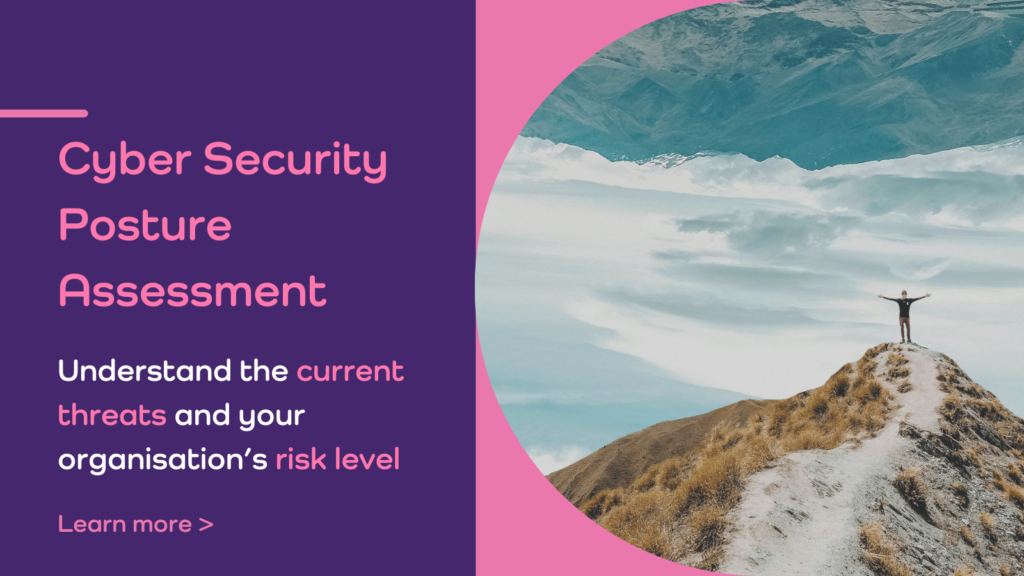The rise of hybrid working has forever changed how businesses view their endpoint security posture. With employees working between multiple locations, the risk of data breaches, cyberattacks and network intrusion has grown exponentially. Hybrid work also makes it more difficult for IT teams to ensure employees are following best practices to avoid an attack. As a result, endpoint security has become a high priority for many businesses.
Below we explore what endpoint security is, the security challenges organisations face, and best practice for securing your networks, apps and data.
What is endpoint security?
An endpoint is any device that is connected to a network or IT system. This includes laptops, mobile phones, desktops, IoT devices, servers and virtual environments. Endpoint security is important as they are key vulnerability points of entry for cybercriminals. If a hacker gains access to an endpoint and executes malicious code, they can potentially access private data or launch a larger attack.
In the past, endpoint security was primarily focused on antivirus solutions, but as the threat landscape has changed, the scope for endpoint security has broadened, with an emphasis on user behaviour.
Constantly expanding attack surface
As technology evolves, organisations and their employees are using more devices either in a work capacity or on a corporate network. In the past, cybercriminals had a handful of endpoints they could target, including desktops, network devices, printers, and servers. For businesses, this meant that if these devices were secure, the chance of a successful attack was relatively low.
In 2022, this attack surface has greatly increased with devices such as virtualised servers, personal laptops and phones, IoT devices, smart environmental controls and even wearable technologies, such as smart watches and fitness trackers. All these endpoints are now targetable by hackers, and it is difficult for an IT team to manage the sheer volume of devices. As new technologies are introduced into the market, this attack surface will continue to expand, putting businesses at risk of a cyberattack.
Understand your organisation’s current risk level, get a Cyber Security Posture Assessment here >
Endpoint security and hybrid workforces
The advent of remote and hybrid work has many benefits for business leaders and employees; however it poses a unique challenge for endpoint security. With employees working in different geolocations, it means they need to connect to a corporate network through other means, which also expands the attack surface.
If employees are connecting to IT systems through a hotspot or public WiFi, it opens the door to a potential man-in-the-middle attack. This form of attack is where a cybercriminal uses malicious software that allows them to intercept all traffic between an endpoint and a corporate network. Through eavesdropping on this information, they may be able to launch an attack, or even gain access to the corporate network via the endpoint device.
BYOD and mobile devices
Many organisations have sanctioned a bring your own device (BYOD) programme, as it saves the business money, whilst increasing productivity for employees. Although BYOD has many benefits, it carries a potential security risk. If employees are using older devices that do not receive security updates, they become an easy target for cybercriminals to exploit software vulnerabilities. Similarly, if an employee loses their device, or has it stolen, it puts the local device at risk of a data breach, as well as the corporate network, if they have their passwords saved.
Shadow IT
Shadow IT is the use of IT hardware or software used by a department or individual without the knowledge of the IT department or IT/security provider. This software may include cloud services or applications that departments use to increase productivity or to solve shortcomings of the provided software. The risk of using unauthorised software is that it may have a vulnerability that could lead to an attack on networks or systems. Similarly, if employees use unauthorised file sharing platforms, it puts customer data at risk of a data breach.
Best practices for endpoint security
To keep your organisation safe and to develop an effective endpoint security policy, here are five endpoint security best practices to consider.
- Inventory audit of all devices: it is essential to get full visibility of all endpoint devices connecting to corporate applications and data. Invest resources in identifying devices connecting to the corporate network, or integrating with cloud applications.
- Device profiling: by understanding how endpoints operate, the data they collect and share and how software is updated on each endpoint, you can access the security risks and decide on appropriate controls for each.
- Device security: what security products are already deployed, and what are available to protect your organisation? Develop plans for different devices based on device profiling and also ownership of the device. Employee-owned devices may require different security products to corporate devices.
- Adopt zero trust principles: the zero-trust principle of “never trust, always verify” is critical for securing multiple endpoints. No user or endpoint should be automatically trusted, all requests must be authenticated and authorised. This verification is based on all data points, including user identity, device health, service or workload, classification, and anomalies.
- Educate end users: ensuring end users, particularly those using their own devices, support your endpoint security policy, raise awareness of the threats and the measures in place to protect the network and data. When end users understand why they can only access applications or data in a specific way, or why you want to install new software on their device, they are more likely to comply.
For IT teams to effectively secure endpoints, they require complete visibility over who is connecting to a network, from which device, for what use, and all associated traffic. Putting in place a robust endpoint security policy will help you manage access more effectively and keep your organisation and people safe.
If you have any questions or require more support to implement an endpoint security strategy, please get in touch with our team.







